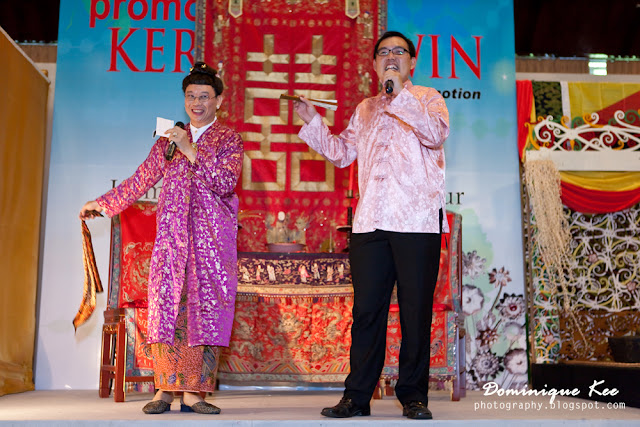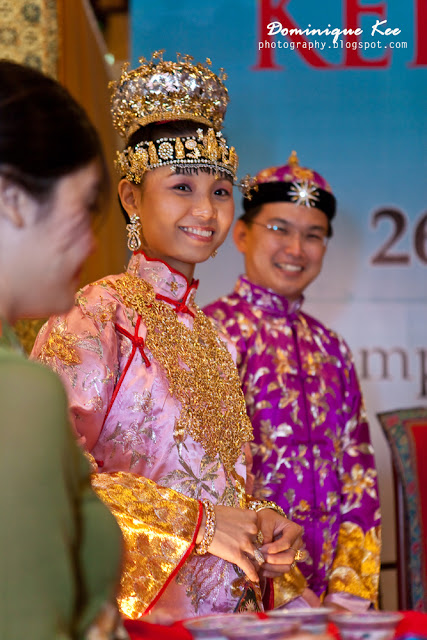Have you ever witnessed an authentic Peranakan wedding? I know I have not. This traditional practice dates all the way back to [when again? ] and like most things of rich, cultural value, is slowly dying out. This is hardly surprising considering that the younger generations are showing less interest in the culture and practices of yester-year. However, a rapidly growing group of well-meaning people have been fighting tooth and nail to make sure this unique aspect of our Malaysian culture and history, does not fade away to obscurity.
Cue the Persatuan Peranakan Baba Nyonya Kuala Lumpur (PPBNKL) (hereinafter referred to as “the Association”). The Association was established in 28th July 2008 and is helmed by Dr. Lee Su Kim, an Associate Professor at Universiti Kebangsaan Malaysia, Bangi, Selangor. The Association is composed of well-meaning individuals seeking to retain, appreciate and spread awareness of the Peranakan culture in Malaysia
Interesting fact: Dr. Lee is the first Nyonya President of the Peranakan associations in Malaysia and Singapore, setting another precedent as all previous Presidents of the Peranakan associations in Malaysia and Singapore have been Babas.
One of the many planned events endorsed and/or organized throughout the year by the Association, is the authentic traditional Peranakan Wedding Demonstration. The said Demonstration was to be held on the late morning of Sunday, 29th May 2011, at the Kompleks Kraftangan, Kuala Lumpur
Let me tell you, the traditional Peranakan wedding is sight to behold indeed!
Traditional Peranakan weddings were elaborate and time-consuming affairs! Seeing as how Peranakans of old were of affluent families, their nuptials were usually eye-catchingly loud, over-the-top and of course, expensive. In fact, not content with just 1 day, traditional Peranakan weddings would often last up to 2 weeks! Sadly, many traditional practices have all but faded away to memory even in the usual Peranakan ‘strongholds’ and this is no exception. Only in Malacca, where the culture is (arguably) set strongest in Malaysia
Traditional Peranakan weddings went a little something like this: Prior to the actual wedding day itself, the pre-nup procedures take place several days before the actual wedding day. These procedures include the preparation of the Bridal Chamber where there popular practice of having a young child, a boy, roll around the Bridal Bed. It is said that this encourages fertility. I think they got the process the other way around: The boy comes later. Haha. Sorry.
Later on, relative and friends drop by the house to help out with decoration and food arrangements. Thank goodness we have maintained this culture today. The days preceding the Special Day itself is often considered by many to be equally special, since loved ones from near and far gather to renew their family bonds. The Peranakan people were known to be very strongly family oriented.
Later on there would be loud and fancy processions between the Bride and the Bridegroom’s respective houses to deliver gifts to each other’s family, to show their sincerity in the pending nuptials.
Finally, the wedding day itself! The lucky couple will don their respective wedding outfits, made of the finest Chinese silk, with the relevant accessories such as head gear and various adornments. The Groom then begins his procession to the bride’s residence. The Groom’s procession will be accompanied by musicians, hugely disproportionate umbrellas, lanterns, as well as other pomp and splendour.
Meanwhile, the Bride, while awaiting her husband-to-be, undergoes her own transition rituals, from ‘childhood’ to ‘womanhood’. Before her Knight-in-Shining-Silk arrives, the Bride is veiled by her parents, in an emotional exchange.
Once the Grooms arrives at the Bride’s residence, the whole process becomes vaguely familiar. The Groom’s arrival is noisily sounded by music, gongs and various percussions. Today, we just honk our vehicle horns. Go figure. This is followed by more exchange of gifts as well as the requisite ‘pang teh’ ceremony: Serving tea to the elders of the Bride and Groom. The term ‘elder’ here may not always refer to age literally. It actually refers to the ‘ranking’ or seniority of the individual within the family hierarchy.
So what happened to tradition? Old-timers tell us that over time, there was a sharp decline in Peranakan wealth, and with that, went their status in society. Naturally, the elaborate and costly wedding traditions had to be shelved a little by little. Another interesting point is that historically, Peranakans were generally Buddhists/Taoists practitioners. However, following the conversion of many Peranakan to Christianity, many aspects of culture and tradition faded away, for being inconsistent with Christian teachings.
Please take note that the above article is written by me with reference to several sources and reading material. I have attempted to describe the mere framework of such an elaborate event, by indentifying common elements of all my sources. Further, because I cannot personally verify the detailed procedures contained therein (due to lack of experience/ knowledge on my part), I have left those out.
If you are interested in this amazing, lovely and rich culture, and you want to learn more or obtain more information on this, please feel free to contact me (dominiquekee@gmail.com) and I'll be able to point you in the right direction!
If you are interested in this amazing, lovely and rich culture, and you want to learn more or obtain more information on this, please feel free to contact me (dominiquekee@gmail.com) and I'll be able to point you in the right direction!
For those of you who like statistics:
Vital Stats for June: 1 post 33 pics
Vital Stats So Far: 78 posts 3,117 pics
Disclaimer: The views published in the above photoblog are the author's and the author's alone. If readers are not agreeable with the above views, well, you can bugger-off. All rights are reserved for the photos and the article itself. This article may be reproduced with permission of the author for private or public usage, or other forms of general mayhem. Any unauthorized usage of the images or articles contained therein is expressly prohibited and violators will be prosecuted with the full force of Malaysian law applicable. Thank you for reading this disclaimer.


































No comments:
Post a Comment